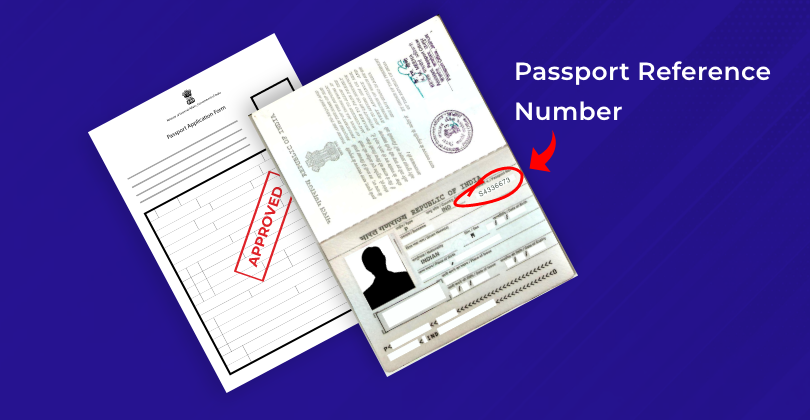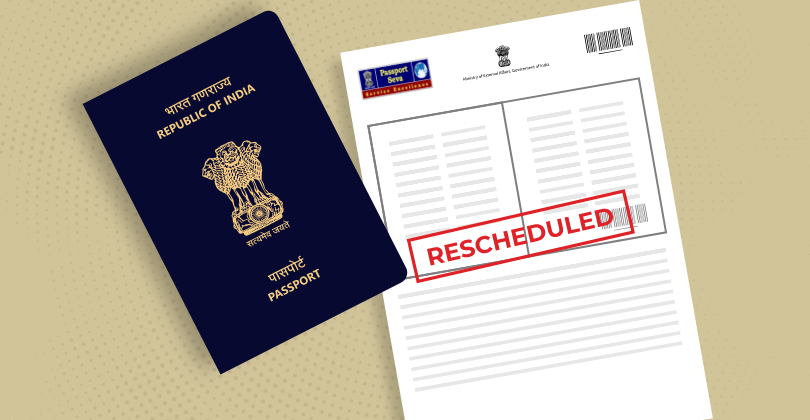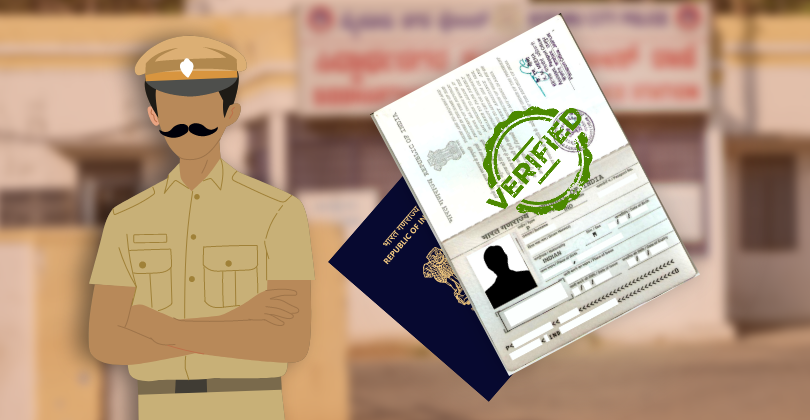Do you need to travel abroad suddenly but don't have a passport? This can be stressful, especially with the thorough passport application process. Luckily, there's
A passport is essential for international travel. This blog will provide a complete guide to Indian passports, covering the types available, eligibility criteria, and application processes. We'll also discuss personal loans for travel and travel loans to help finance your trips.
Types of Passports Issued
The Indian Ministry of External Affairs issues passports based on travel needs. Here are the main types:
-
Ordinary Passport (Blue): Also known as Type P, this is the most common for Indian citizens. It's used for vacations, business trips, studies, or pilgrimages.
-
Official Passport (White): Known as Type S, this is for Indian government officials travelling abroad for official duties.
-
Diplomatic Passport (Maroon): This gives special privileges to Indian diplomats, MPs, government officials, and diplomatic couriers.
-
Emigration Passport (Orange): This protects Indian citizens seeking jobs abroad, especially those without formal education, from exploitation.
How to Apply for an Indian Passport
Here are the ways to apply for an Indian passport. For more details, visit the official Passport Seva Portal.
Via e-Form Submission:
-
Register on the Passport Seva Portal.
-
Download the e-Form, fill it out, and upload it as an XML file.
-
Book an appointment at the closest Passport Seva Kendra and pay the fees.
Via Online Form Submission:
-
Register on the Passport Seva Portal .
-
Fill out the online form directly on the website.
-
Get a slot at the nearest Passport Seva Kendra and pay the fees.
In-Person Application:
-
Get the application form from the Passport Seva Portal or a District Passport Cell.
-
Fill out the form, attach self-attested copies of the required documents, and submit it at the DPC counter.
-
Pay the fees using a Demand Draft and receive an Acknowledgement Letter.
Fee Structure for Indian Passports
| Type of Indian Passport | Fee (Normal) | Fee (Tatkal) |
|---|---|---|
| Ordinary (10-year validity) | ||
| - 36 pages | ₹1,500 | ₹2,000 |
| - 60 pages | ₹2,000 | ₹4,000 |
| For Minors | ||
| Under 15 years | ₹1,000 | ₹3,000 |
| 15-18 years (36 pages) | ₹1,500 | ₹3,500 |
| 15-18 years (60 pages) | ₹2,000 | ₹4,000 |
| Diplomatic | Generally no fees | Generally no fees |
| Official | Generally no fees | Generally no fees |
| Type of Indian Passport | Fee (Normal) | Fee (Tatkal) |
|---|---|---|
| Ordinary (10-year validity) | ||
| - 36 pages | ₹1,500 | ₹2,000 |
| - 60 pages | ₹2,000 | ₹4,000 |
| For Minors | ||
| Under 15 years | ₹1,000 | ₹3,000 |
| 15-18 years (36 pages) | ₹1,500 | ₹3,500 |
| 15-18 years (60 pages) | ₹2,000 | ₹4,000 |
| Diplomatic | Generally no fees | Generally no fees |
| Official | Generally no fees | Generally no fees |
Payment Methods:
-
Debit/Credit Cards
-
Internet Banking
-
Bank Challan (SBI)
-
Wallet Payment (SBI)
For the latest fee structure as of 2024, please refer to the official Passport Seva Portal.
Documents Required for Indian Passport Application
The documents you need depend on your category and other factors. Here’s a list of commonly required documents:
| Category | Documents |
|---|---|
| Proof of Current Address | Telephone Bill (Landline or Postpaid Mobile), Electricity Bill, Water Bill, Voter ID card, Income Tax Assessment Order, Gas connection Bill, Spouse’s Passport Copy, Employer Certificate from Reputed Companies, Parent’s Passport Copy (for Minors), Aadhaar Card, Rent Agreement, Bank Passbook (Photo Passbook) |
| Proof of Date of Birth | Birth Certificate, School Leaving or Matriculation Certificate, Policy Bonds from Public Life Insurance Companies, Government Service Record (for Government Servants), Driving Licence, PAN Card, Election Photo Identity Card, Declaration from the Head of the Orphanage/Child Care Home |
| Category | Documents |
|---|---|
| Proof of Current Address | Telephone Bill (Landline or Postpaid Mobile), Electricity Bill, Water Bill, Voter ID card, Income Tax Assessment Order, Gas connection Bill, Spouse’s Passport Copy, Employer Certificate from Reputed Companies, Parent’s Passport Copy (for Minors), Aadhaar Card, Rent Agreement, Bank Passbook (Photo Passbook) |
| Proof of Date of Birth | Birth Certificate, School Leaving or Matriculation Certificate, Policy Bonds from Public Life Insurance Companies, Government Service Record (for Government Servants), Driving Licence, PAN Card, Election Photo Identity Card, Declaration from the Head of the Orphanage/Child Care Home |
This is a general list of documents. The exact requirements may vary for minors, non-ECR applicants, and other specific cases.
Track Indian Passport Application Status
You can apply for a new or renew your passport online and track the status from home. The Passport Seva Portal (PSP) allows you to follow the various stages of your application, ensuring everything is on track. You can monitor:
-
Application status
-
Review status
-
Police verification status
-
Submission of police verification report
-
Passport printing, granting, dispatching, or return status
To track your application status, you can use:
-
National Toll-free number 1800 258 1800
-
mPassport Seva Mobile App
-
SMS service
-
Email updates
Once your appointment and police verification are complete, you must wait for your passport to arrive at your registered address.
Validity and Expiry
Here are the details about passport validity and expiry as of 2024:
-
A passport with 36 or 60 pages is valid for 10 years from the date of issue. .
-
Passports for citizens under 18 are valid for five years.
-
Minors aged 15 to 18 can opt for a passport valid for 10 years.
Things to Consider When Paying Passport Fees in India
The application process can be time-consuming. Here are some essential points to remember when paying the fees:
-
No Refunds: If you don't book an appointment after paying the fee, you won't get a refund.
-
Extra Charges: An additional 1.5% fee may apply if you pay with a credit or debit card.
-
Receipt: If you pay the fee online, print the receipt as you'll need it for your appointment.
-
Validity: TYour application fee is valid for one year from the payment date.
-
Additional Fee: There's an extra GEP fee of INR 500.
Rejection of Passport Application
An Indian passport application can sometimes be rejected due to errors. Here are some common reasons for rejection:
-
Not following application instructions
-
Providing incorrect or outdated information
-
Having a criminal record or pending case
-
Missing necessary documents
-
Submitting unclear copies of documents
-
Not paying the fee on time
-
Failing police verification
-
Having unpaid dues
-
Other security reasons
For more details on avoiding common errors, visit the official government website.
Simplifying Your Application
Applying for an Indian passport is simple, with the correct information. With proper documentation, the process is smooth and efficient.
Need financial support for your travels? KreditBee offers personal loans for travel and travel loans to help fund your trips abroad. Enjoy hassle-free documentation and get your loan disbursed in just 10 minutes, all 100% online.
Frequently Asked Questions
Ans. A Tatkal passport is a special type of Indian passport that is processed much faster than a regular passport. It's designed for people who need a passport urgently for reasons like unexpected travel due to a family emergency or work.
Ans. No, you only need proof of a valid address, such as an electricity bill, rent agreement, Aadhar card, or bank account passbook.
Ans. Police verification is not required for Indian applicants under 18.
Ans. You can change personal details by applying for a re-issue with the required documents and fee.
Ans.Indian passports can be renewed nine to twelve months before expiration.
Ans.Yes, you can apply for an Indian passport while abroad. You will need to visit the nearest Indian Embassy or Consulate to submit your application.
Ans.Report the loss to the nearest police station and Indian Mission, then apply for a re-issue.
AUTHOR
KreditBee As a market leader in the Fintech industry, we strive to bring you the best information to help you manage finances better. These blogs aim to make complicated monetary matters a whole lot simpler.







